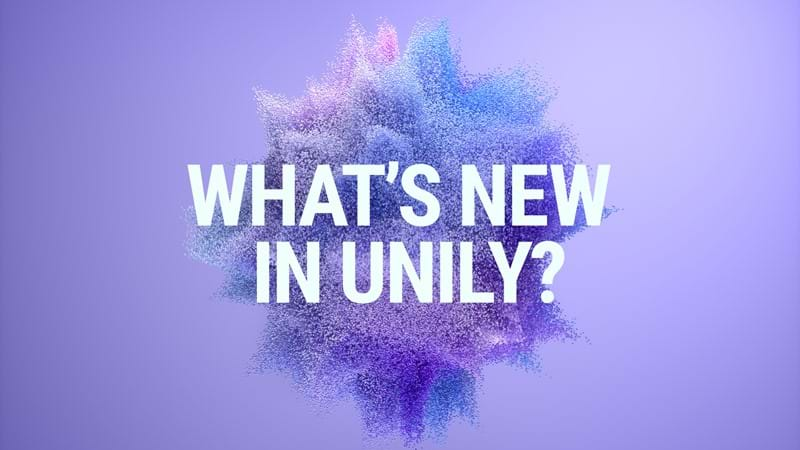4 expert insights to supercharge your 2024 internal comms strategy
Even the savviest internal communicators have questions about the efficacy of their strategies and how to improve them. Rather than letting these questions go unanswered, we rounded up four leading internal comms experts to share their words of wisdom about internal communications’ most pressing topics.

Ask an internal comms expert: The Unite 23 edition
Unite 23 was Unily’s landmark employee experience conference, attended by employee engagement leaders from enterprises around the world. Every year we host an Ask an IC expert session, where we bring together leading enterprise communicators and advisors to share hot takes on the big topics of the moment.
Our panelists this year included Joanna Parsons, Founder and Director of The Curious Route; Bryan Vermes, Director of Employee Experience and Communications at Mimecast; Chris Andrew, Head of Caburn Hope; and Kim England, Vice President of Global Employee Communications at Pearson.
The panel tackled questions from internal communicators in the audience, put to them by Unily’s Employee Experience Lead Kaz Hassan. The session was packed with actionable advice and unique insights on the key themes and strategies shaping the next phase of internal comms growth, from the rise of AI to the best tactics for employee listening. We pulled out our top four takeaways to help you get ahead in 2024.
Takeaway #1: Employee listening strategies must be data-driven and bite-sized
While most internal communicators recognize the value of employee listening, many teams struggle to devise an approach that captures their workforce’s sentiment in real-time. As Chris explains: “The way the world of work is changing so quickly now, the annual employee survey doesn’t really cut it anymore. So how can you be listening and responding more in real-time?.”
To help communicators fine-tune their employee listening tactics, Bryan has a recommendation: “Keep it bite-sized, keep it small.” He also suggests following data, which Parsons also identifies as a winning approach. “When it comes to employee listening, people often listen to everything but they don’t always think about 'what data do I need?' and 'what I am going to do with that?'”, she explains.
Adding on, Kim shifts the focus of the conversation to the importance of the manager. “We really need to get into the IQ of the manager,” she says. “They have a huge impact on getting that message out and getting people to believe in the message. Managers are also uniquely positioned to listen to what employees need.”
Takeaway #2: The core purpose of internal comms is amplifying employees’ voices
From sharing policy updates to spotlighting top performers, internal comms teams have so many items on their agenda that some professionals may occasionally feel disconnected from the core purpose of their function.
Fortunately, our experts had a few words to say on this topic, including Joanna, who encourages internal communicators to keep it simple and give employees opportunities to have their voices heard. “We kind of overcomplicate things,” she explains. “Be curious about your audience. People don’t listen enough. You’d be amazed at the stuff people will tell you very candidly. You just need to go and listen.”
Bryan also emphasizes the importance of encouraging people to share their stories and opinions through employee-generated content. “If you’re able to intentionally develop a culture where people freely share their stories and perspectives and amplify that and provide people with the spotlight, that’s much more authentic than anything one person can churn out.” Chris expresses a similar sentiment, noting, “Communications is an opportunity to connect, not just tell people stuff.”
For internal communicators who struggle to balance amplifying their people's voices with company-wide updates, Kim has the following anecdotal advice: “We have a platform that’s very much focused on global messaging but the way that we bring the voice of our people is through storytelling. We have people who know their beats inside out. They’re telling the stories of individuals and that’s how we bring those stories to life.”
Takeaway 3: AI can help internal comms—as long as it’s used responsibly
2023 has been a banner year for AI, so it’s no surprise that automation’s role in internal communications was a major topic of discussion. Bryan encourages leaders to separate AI’s hype from the cold hard facts, noting, “It’s a little bit of a buzzword right now. But in its true form, it’s helpful if used in the right ways. We have to be mindful of having our own moral compass when we’re using these tools.”
To help internal communicators use AI responsibly, England recommends learning more about how these systems work. “The genie is out of the bottle,” she acknowledges. “Some of us work for companies that are going to shape how AI is used in the future, but friend or foe, the best way to understand AI is to be curious and educate ourselves.”
Chris expresses a cautiously optimistic perspective on how internal communicators’ AI use will evolve. “Trust and authenticity might be a challenge in the short term. But the reality is that it was the same with social media. As time goes on, I think we will learn to live with AI and use it as a tool within our tool kit.”
Takeaway 4: With the right communications approach, hybrid and remote workers can thrive
Years after the COVID-19 pandemic catalyzed a worldwide shift to remote working, executives are debating the merits of working in the same physical location and striving to redefine the office experience.
All of our internal comms experts emphasized that successful remote collaboration is possible, as long as communications strategies are effective. In describing her own experience working with global colleagues, Kim notes, “The person I worked with most during the pandemic I met twice in my life. We have a great connection without being in the office together. It all comes down to trust. You need to trust your employees to get the work done wherever that may be.”
Joanna supports the practice of remote collaboration, explaining, “There’s this belief that if you put people together in a room that suddenly they work well together. I’ve never seen that happen in my life. It’s more about how you design the experience and how intentional you are.”
Reflecting on how COVID-19 has changed the nature of virtual communication, Chris emphasizes that there are pros and cons. “There’s been this massive change, but we’ve got some hangovers from the pandemic, good and bad,” he says. “Good is that it’s now normal to have a virtual call, bad is back to back meetings we never used to have. That needs to change, we need more time to figure out that creativity piece.”
Catch up with the full session on demand!
2024 will be a critical year for internal communicators as they strive to maintain and grow their newly found strategic importance and drive business value through employee alignment in the era of physical disconnection. The ICs that accelerate fastest will be those that lean into peer insights and collaborative innovation beyond the walls of their own enterprises. Get started by tuning into the full session on demand, and explore other content from the biggest EX conference to date.
-
On-demand









